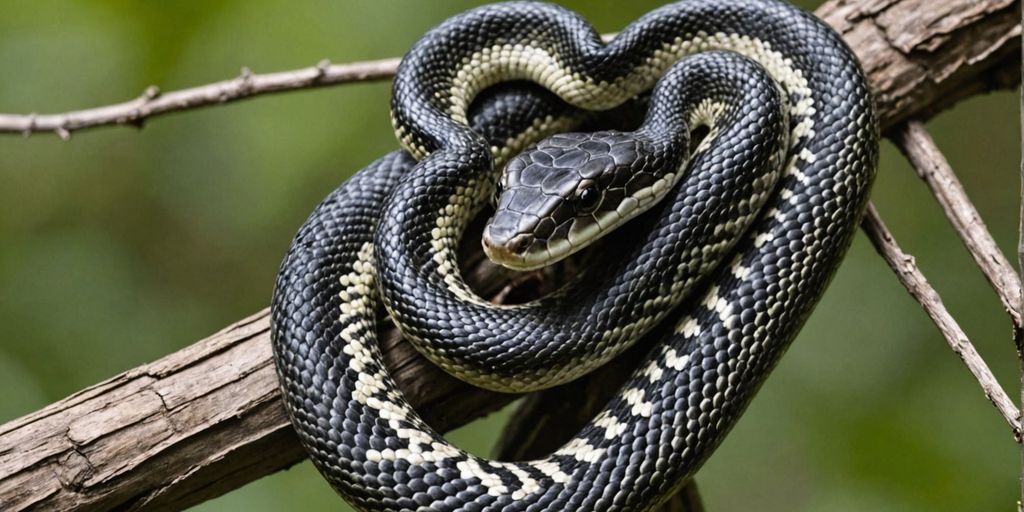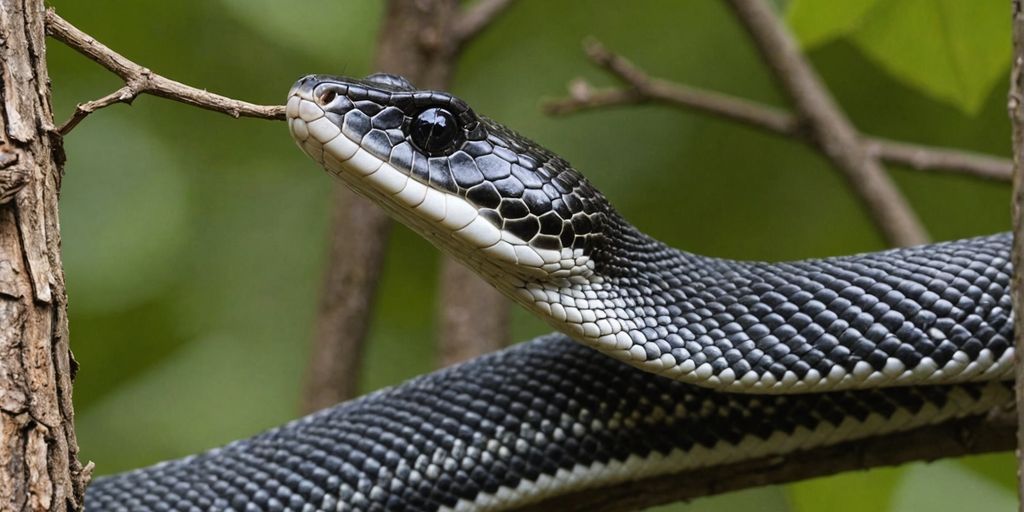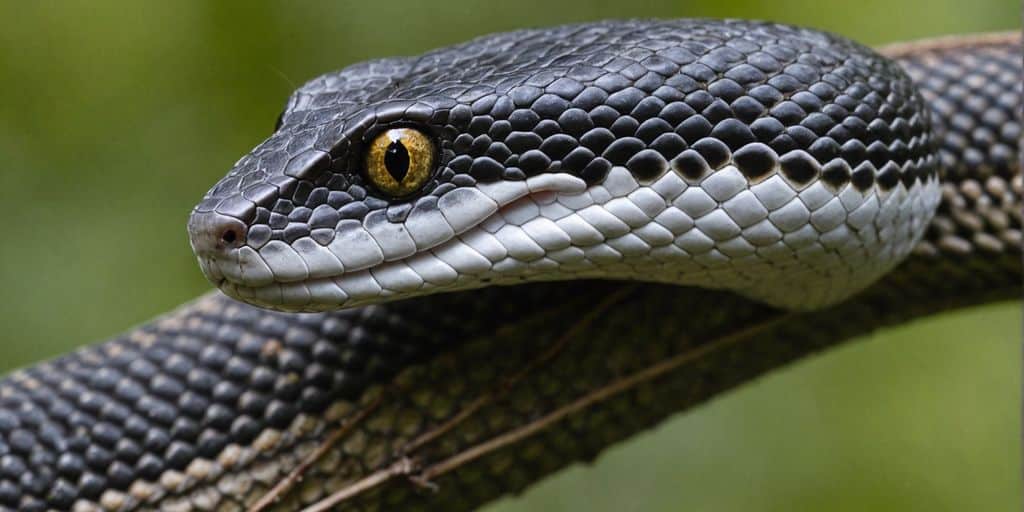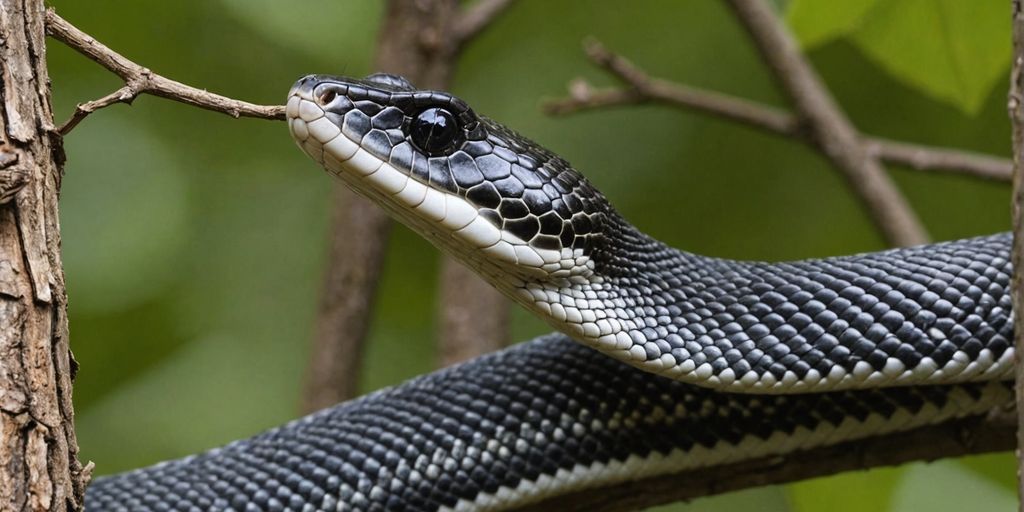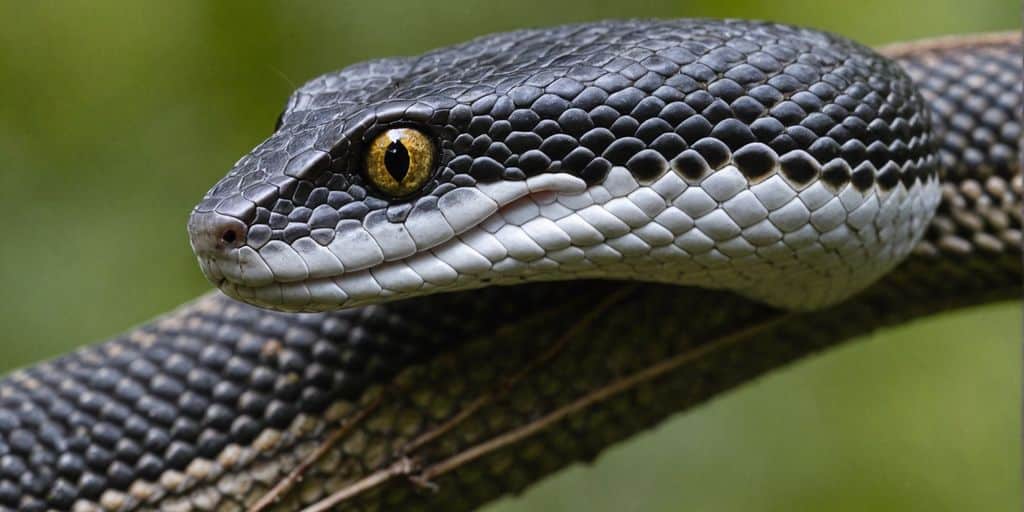The Texas rat snake is a fascinating reptile known for its adaptability and unique behaviors. Found primarily in Texas, this non-venomous snake can also be seen in neighboring states like Louisiana, Kansas, Arkansas, and Oklahoma. Despite their sometimes aggressive demeanor, these snakes play a crucial role in maintaining the balance of their ecosystems by controlling rodent populations. Whether you’re a budding herpetologist or just curious about these intriguing creatures, understanding their habitat, behavior, and role in nature can provide valuable insights.
Key Takeaways
- Texas rat snakes are non-venomous and primarily found in Texas, but their range extends to nearby states.
- These snakes are highly adaptable, capable of living in various environments, including urban areas.
- They play a vital role in controlling rodent populations, making them beneficial for farmers.
- Texas rat snakes exhibit defensive behaviors like tail rattling and musking when threatened.
- In captivity, they require specific care, including proper housing, diet, and handling to thrive.
Physical Characteristics of the Texas Rat Snake
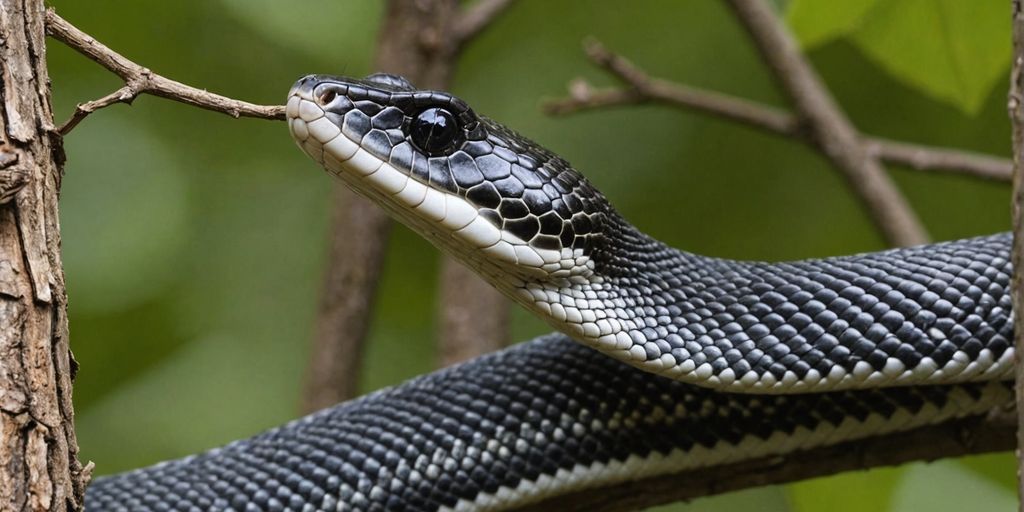
Color and Pattern Variations
The Texas rat snake shows a lot of variety in both color and pattern. Typically, they have a yellow or tan upper body with brown to olive-green blotches. In the southern parts of their range, they tend to be more yellow, while those in the north are darker. Some snakes even have red or orange specks. Unique color variations like albinos and leucistic forms are also found and are popular in the pet trade.
Size and Shape
These snakes are medium to large, usually growing to about 4 to 5 feet long. They are long and slender with wedge-shaped heads. Hatchlings are about one foot in size and grow quickly. Their pupils are round, which is common for non-venomous snakes.
Distinguishing Features
One way to tell a Texas rat snake apart from other rat snakes is by their solid gray head. Their belly is usually solid gray or white. Some snakes from Sabine County, Texas, are very black with white spots, showing a mix with the black rat snake. Their semi-arboreal nature allows them to climb trees and shrubs, which aids in their hunting and thermoregulation activities.
Habitat and Distribution
Geographical Range
The Texas Rat Snake is found primarily in the central United States. Their range extends from southeastern Iowa, through Missouri and Arkansas, down to Louisiana, and westward to eastern Texas. They are also present in parts of Oklahoma and Kansas.
Preferred Environments
Texas Rat Snakes thrive in a variety of habitats. They can be found in rocky hillsides, canyons, and scrub fields. They also inhabit temperate forests, swamps, and grasslands. These snakes are adaptable and can live in both dry woodlands and sandy prairies.
Urban vs. Rural Habitats
Interestingly, Texas Rat Snakes are equally at home in urban and rural settings. In rural areas, they often inhabit abandoned farmlands and old oil fields. In urban environments, they can be found in homes and even old buildings. This adaptability makes them a common sight in both the city and the countryside.
Behavioral Traits
Defensive Behaviors
Texas rat snakes have several ways to defend themselves. They often rattle their tails and open their mouths wide to scare off threats. If that doesn’t work, they might strike. Even though they aren’t venomous, their bite can still hurt. Another trick they use is to release a bad-smelling musk, especially when they are young.
Interaction with Humans
When it comes to people, Texas rat snakes can be a bit shy at first. However, if you handle them gently and often, they can become more comfortable. It’s important to pick them up the right way—slide your hand under their body and avoid sudden movements. This helps them feel safe and reduces their defensive behaviors.
Regular handling helps build trust between you and your snake. Start with once a week and see how they react.
Activity Patterns
Texas rat snakes are mostly active during the day, making them diurnal. They like to move around and explore their surroundings. However, they can also be active at night, especially when hunting for food. This mix of day and night activity helps them find food and stay safe from predators.
Diet and Hunting Strategies
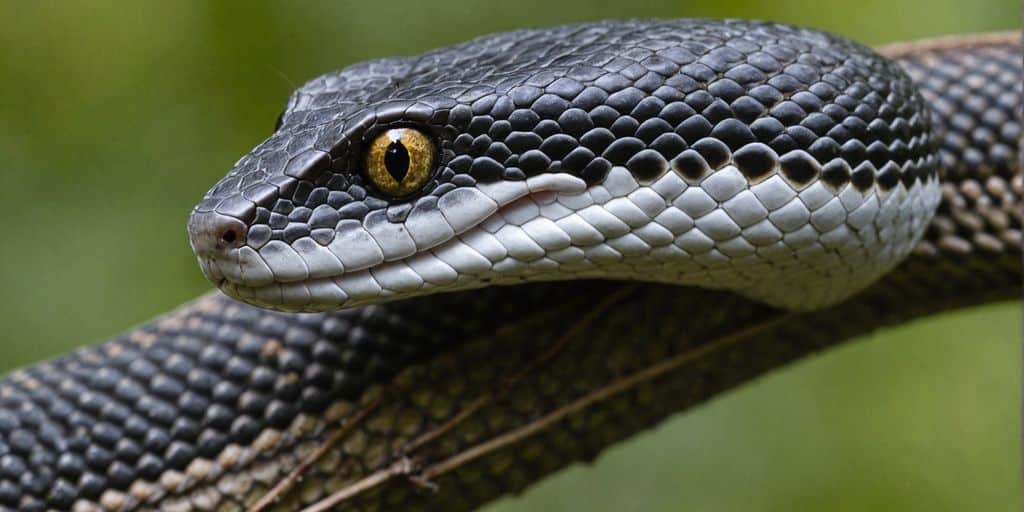
Primary Prey
The Texas rat snake primarily feeds on rodents, such as mice and rats. These snakes are primarily rodent consumers, preying on small mammals. They also eat birds, eggs, and occasionally lizards and frogs. This varied diet helps them thrive in different environments.
Hunting Techniques
Texas rat snakes are skilled hunters. They use a combination of stealth and speed to catch their prey. They are known to be excellent climbers, often raiding bird nests for eggs and chicks. When hunting rodents, they rely on their keen sense of smell to track them down. Once they locate their prey, they strike quickly and constrict it until it suffocates.
Role in the Ecosystem
Texas rat snakes play a crucial role in controlling the population of small mammals and birds. By keeping the numbers of these animals in check, they help maintain a balanced ecosystem. They are both primary and secondary predators, meaning they eat other animals and are also preyed upon by larger predators. This makes them an important part of the food chain.
The Texas rat snake’s diet and hunting strategies highlight its adaptability and importance in its natural habitat.
Reproduction and Lifespan
Breeding Season
Texas rat snakes reach sexual maturity between 3 and 7 years old. They are polygynandrous, meaning both males and females have multiple mates. The breeding season typically runs from April to June, but can extend into early fall if temperatures are warm enough.
Egg Laying and Incubation
Female Texas rat snakes lay multiple clutches of eggs during the mating season. A typical clutch size ranges from 4 to 44 eggs, with an average of about 15. The eggs incubate for approximately 65 to 70 days before hatching. Hatchlings are independent at birth and receive no parental care.
Lifespan in the Wild and Captivity
In captivity, Texas rat snakes can live between 16 and 33.9 years. The lifespan in the wild is less documented, but similar species like the corn snake have been known to live up to 24 years in natural settings.
Texas rat snakes are oviparous, meaning they lay eggs that develop and hatch outside the mother’s body.
Conservation and Threats
Human Impact
Human activities have a significant impact on the Texas Rat Snake. Urbanization and agricultural expansion lead to habitat loss and fragmentation. Additionally, the pet trade, if not regulated, can reduce wild populations. It’s crucial to ensure that wild populations remain at healthy levels.
Natural Predators
Texas Rat Snakes face threats from various natural predators. Birds of prey, such as hawks and owls, are common predators. Mammals like raccoons and foxes also pose a threat. Despite these predators, the Texas Rat Snake has developed effective defensive behaviors to survive.
Conservation Efforts
Currently, the Texas Rat Snake is listed as “Least Concern” on the IUCN Red List, meaning it is not at immediate risk of extinction. However, ongoing conservation efforts are essential to maintain this status. Protected areas and habitat preservation play a vital role in their conservation. Additionally, public education about the importance of these snakes in the ecosystem can help reduce unnecessary killings and promote coexistence.
Texas Rat Snake in Captivity
Housing Requirements
Texas rat snakes are long and active, so they need plenty of space. A secure enclosure is essential because they are escape artists and can squeeze through small gaps. Provide lots of hiding spots to make them feel safe. Use wood shavings like aspen or cypress for a natural look and to allow burrowing.
Feeding in Captivity
Captive rat snakes are usually fed pre-killed or thawed frozen mice. This reduces the risk of injury and disease. They eat readily in captivity and will thrive on a diet of rodents. Avoid handling them right after feeding to prevent stress.
Handling and Temperament
Rat snakes from Texas can be quite docile, but their temperament can vary. Regular handling can help them become more accustomed to human interaction. When handling, avoid sudden movements and approach them from the side rather than the front to make them feel more secure.
With proper care and attention, Texas rat snakes can live long and healthy lives in captivity, making them a rewarding pet for responsible keepers.
Conclusion
In summary, the Texas rat snake is a fascinating and adaptable creature that plays a crucial role in its ecosystem. From its diverse habitats to its varied diet, this snake showcases remarkable versatility. Despite its sometimes defensive nature, it is generally harmless to humans and can even be beneficial by controlling rodent populations. Understanding the Texas rat snake’s behavior and needs can help us appreciate this unique reptile and ensure its conservation for future generations.
Frequently Asked Questions
What does a Texas rat snake look like?
Texas rat snakes are usually yellow or tan with brown to olive-green blotches. They have a solid gray head and a gray or white belly. Some may have red or orange specks.
Where can you find Texas rat snakes?
Texas rat snakes are mainly found in Texas, but they also live in parts of Louisiana, Kansas, Arkansas, and Oklahoma. They can be found in forests, grasslands, and even urban areas.
Are Texas rat snakes dangerous?
No, Texas rat snakes are not dangerous to humans. They are non-venomous and help control rodent populations. However, they might bite if they feel threatened.
What do Texas rat snakes eat?
In the wild, Texas rat snakes eat rodents, birds, and bird eggs. In captivity, they are usually fed mice or rats.
How long do Texas rat snakes live?
Texas rat snakes can live in the wild for about 10 to 15 years. In captivity, with proper care, they can live even longer.
How do Texas rat snakes behave?
Texas rat snakes can be quite active and are good climbers. They may become defensive and rattle their tails or bite if they feel threatened. However, they often become docile in captivity.
